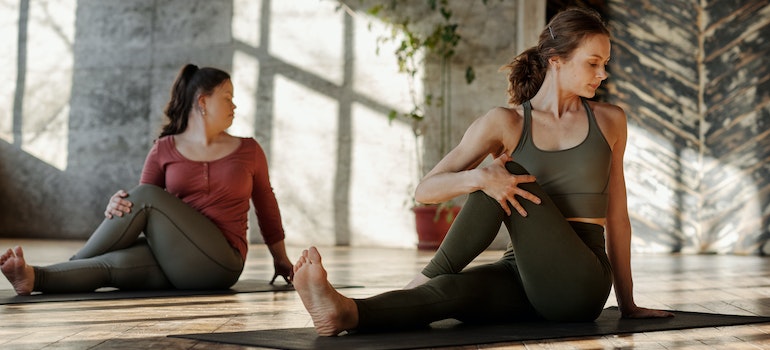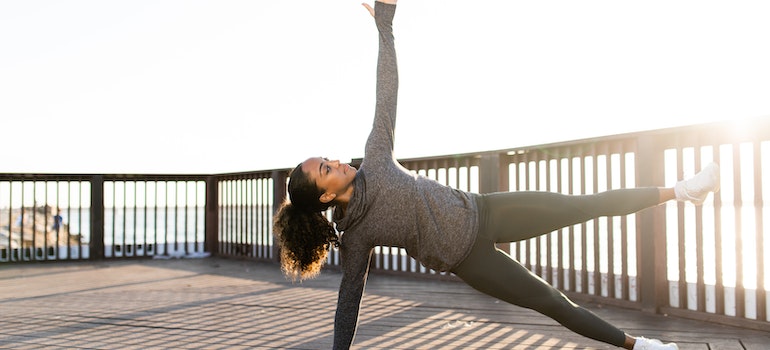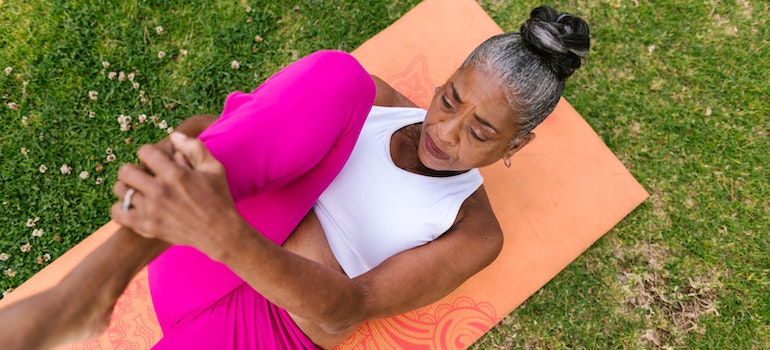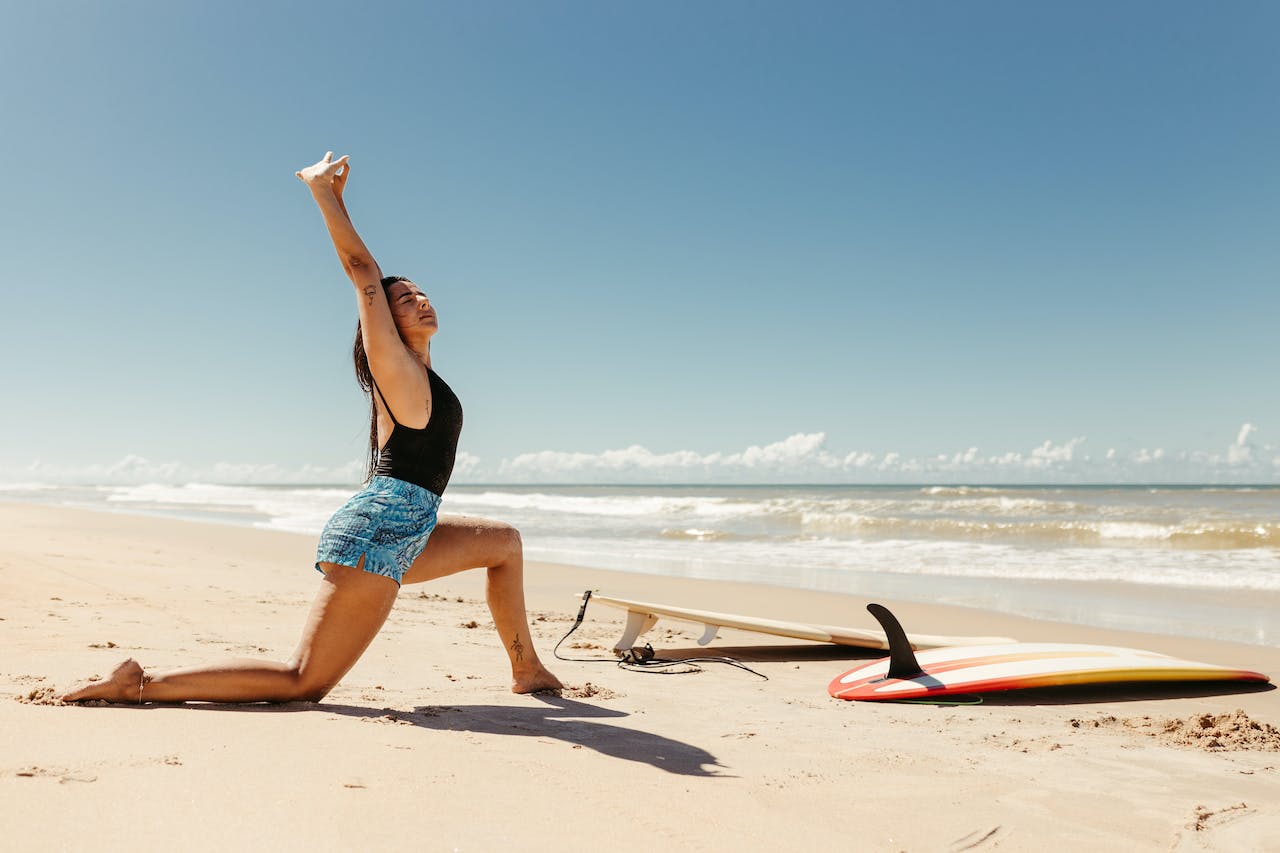In their quest for enhanced performance, many people overlook the pivotal role of mobility. Mobility, the ability to move freely and efficiently, is not merely about executing a range of motions; it’s about doing so with control and strength. It lays the foundation for improving workout efficacy, reducing injury risk, and advancing toward more challenging exercises. FitForce UAE personal trainers in Dubai explore how improved mobility boosts performance, illustrating that it’s not just a game-changer but a cornerstone of effective training. We will unveil the extensive benefits that improved mobility brings to the table, offering a roadmap to unlocking your full physical potential.
What Is Mobility?
Mobility refers to the range of motion and the ease with which one can move one’s body through various activities. It’s a dynamic quality that goes beyond static flexibility, including the ability to control movement actively. Mobility directly influences the efficiency and effectiveness of physical performance, whether in sports, exercise routines, or daily activities. A body with improved mobility moves with greater fluidity and precision, laying the foundation for enhanced overall performance.

Often confused with flexibility, mobility goes a step further. While flexibility focuses on the lengthening of muscles and the range they can passively achieve, mobility involves not just flexibility but also stability and strength within that range. In simpler terms, flexibility is about stretching muscles, while mobility adds the crucial element of control during movement.
So, while flexibility allows your muscles to stretch, mobility ensures that these stretches can be applied actively and functionally, providing a more comprehensive approach to physical capability.
The Importance of Mobility Training for Dubai Residents
In Dubai, a city known for its dynamic lifestyle and diverse range of recreational activities, mobility training plays a crucial role in enhancing athletic performance, fitness levels and overall wellbeing. The city’s warm climate and year-round sunshine offer an ideal environment for outdoor sports and activities, making mobility an essential component for those engaging in popular sports such as football, tennis, golf, and water sports like swimming and paddleboarding. These activities demand a high level of physical fitness, and mobility training helps individuals improve their performance by increasing flexibility, reducing the risk of injury, and enhancing muscle coordination and balance. This training is particularly beneficial in Dubai, where the opportunity to be active outdoors throughout the year places a greater emphasis on maintaining a high level of physical fitness and mobility to enjoy these activities to the fullest.
The Benefits of Improved Mobility
Improved mobility boosts performance, but one of its greatest advantages is preventing injuries. When your muscles and joints can move in a wider range, they can handle physical activity stress more effectively. Because of that, you’re less likely to experience strains and sprains.
Furthermore, better mobility has additional benefits, such as improved muscle function and increased strength. When your body can move more freely, your muscles can produce more force, resulting in enhanced power and performance across a range of activities, including weightlifting, running, and other sports. This increased power not only boosts your athletic abilities but also helps you move more efficiently and conserve energy.
Better mobility also promotes improved posture and a heightened sense of body awareness. When your body can move effortlessly and in a controlled way, it naturally aligns itself in a more balanced and sustainable way. This prevents not only long-term problems caused by bad posture but also makes daily tasks and physical activities easier and more graceful to perform.
Mobility Training Techniques
As improved mobility boosts performance and positively impacts your daily life, it is important to include some of the mobility training methods in your workout or daily routine. They include:
- Dynamic Stretching
- Foam Rolling
- Mobility Drills

What Is Dynamic Stretching and How to Do It?
Dynamic stretching is a form of stretching that involves moving your muscles and joints through a range of motion actively. Unlike static stretching, where you hold a stretch in a stationary position, dynamic stretching involves continuous, controlled movements. This type of stretching is particularly effective as a warm-up before physical activity because it helps increase blood flow, body temperature, and flexibility, preparing your muscles and joints for more vigorous movements.
Examples of dynamic stretching exercises include:
- Leg swings – swinging one leg forward and backward while balancing on the other leg, helping to improve flexibility in the hip and leg muscles.
- Arm circles – extending your arms to the sides and making circular motions with them, warming up the shoulder joints.
- High knees – lifting your knees towards your chest while walking or jogging in place, which stretches your hip flexors and prepares your legs for running or jumping.
- Walking lunges – stepping forward while bending the front knee, which helps warm up the muscles in your legs and hips while improving hip flexibility.
Dynamic stretching should be done in a controlled and smooth manner to prevent injury and gradually increase your range of motion.
What Is Foam Rolling?
Foam rolling is a self-myofascial release technique that involves using a foam roller to apply pressure to various parts of your body, primarily targeting tight or sore muscles. This practice helps alleviate knots, reduce tension, and improve overall flexibility. It can also be used in injury recovery training.
Foam rolling can be a bit uncomfortable, especially when targeting tight muscles, but it can be highly effective for improving muscle function and reducing soreness. If you’re new to foam rolling, it’s a good idea to consult with a fitness professional or physical therapist to ensure you’re using the correct technique and not causing any harm.
How to Perform Foam Rolling
Here are the steps to effective foam rolling sessions:
- Select a foam roller. Foam rollers come in different densities – soft, medium, and firm. Beginners may want to start with a softer roller and gradually progress to firmer ones as they become more accustomed to the practice.
- Find your target area. Common areas for foam rolling include the calves, thighs, hamstrings, glutes, lower back, upper back, and shoulders.
- Use proper technique. Place the foam roller on the floor and sit or lie down on it. Position your body so that the targeted muscle is in contact with the roller.
- Roll slowly back and forth over the target area. Use your body weight to apply pressure, but avoid putting too much pressure, especially if you’re a beginner. The goal is to feel slight discomfort, not pain.
- Stay on knots. When you encounter a tight or tender spot (known as a trigger point or muscle knot), pause and hold the pressure on that spot for about 20-30 seconds. You can also gently roll back and forth over the knot to help release it.
- Breathe and relax your muscles. Tension in the muscles can make the process more uncomfortable.
- Repeat as needed. Continue rolling over the target area for 1-2 minutes or until you feel the muscle tension release. You can repeat this process on other muscle groups as desired.
- Stretch after foam rolling. Perform static stretches for the same muscle groups to enhance flexibility and relaxation further.
- Stay consistent. Regular foam rolling can be beneficial for maintaining muscle health and preventing stiffness. Incorporate it into your warm-up or cool-down routine before or after workouts.
What Are Mobility Drills?
Mobility drills are exercises designed to enhance your joint mobility, increase your range of motion, and improve overall movement quality. They can be beneficial for athletes, fitness enthusiasts, and anyone looking to maintain or regain functional mobility.
Perform these mobility drills regularly, either as part of your warm-up or cool-down routine or even during breaks throughout the day. They can help improve joint health, reduce stiffness, and enhance your overall mobility and flexibility.

How to Perform Mobility Drills
Here’s how to do some basic mobility drills:
- Neck Circles: Stand or sit up straight. Slowly tilt your head forward, to the side, backward, and to the other side in a circular motion. Perform 5-10 circles in each direction.
- Shoulder Circles: Stand with your feet shoulder-width apart. Extend your arms straight out to the sides. Make slow, controlled circular motions with your arms. Perform 10-15 circles in each direction.
- Hip Circles: Stand with your feet hip-width apart and place your hands on your hips. Circle your hips in a clockwise direction. Repeat the motion for 10-15 circles in each direction.
- Ankle Circles: Sit on a chair or the floor with your legs extended. Lift one foot off the ground and make circular motions with your ankle. Perform 10-15 circles in each direction for each ankle.
- Wrist Circles: Extend your arms in front of you. Make slow, circular motions with your wrists. Do 10-15 circles in each direction for each wrist.
- Cat-Cow Stretch (Spinal Mobility): Start on your hands and knees in a tabletop position. Inhale as you arch your back, lifting your head and tailbone (Cow pose). Exhale as you round your spine, tuck your chin, and tuck your tailbone (Cat pose). Repeat this motion for 5-10 cycles.
- Knee-to-Chest Stretch: Lie on your back with your legs extended. Bring one knee toward your chest and hold it with both hands. Gently pull the knee closer to your chest to feel a stretch in your lower back and hip. Hold for 20-30 seconds, then switch legs.
- Deep Squat Hold: Stand with your feet shoulder-width apart and slowly lower into a deep squat position. Keep your heels on the ground and your chest up. Hold this position for 20-30 seconds, using your elbows to push your knees outward gently.
How Improved Mobility Boosts Performance in Different Activities
Improved mobility boosts performance across diverse sports and activities.
In the world of weightlifting, an increased range of motion translates to more efficient and powerful lifts. A weightlifter with improved hip mobility, for instance, can achieve a deeper squat, optimizing the engagement of key muscle groups. A muscle gain personal trainer in Dubai can help you do that correctly and safely.
In yoga, enhanced mobility takes the practice beyond mere flexibility, allowing for more profound and controlled poses. A personal yoga instructor in Dubai will tell you all about it and teach you how to enjoy the most benefits from this incredible activity.
Runners, benefiting from improved joint mobility, experience a smoother and more natural gait, reducing the risk of injuries and optimizing their stride. The same is true for those looking for football training in Dubai.

Mobility training is crucial for boxers as it enhances agility, speed, and coordination, which are essential for both offensive and defensive maneuvers in the ring. Improved mobility helps prevent injuries by maintaining flexibility and joint range of motion, which is critical for repetitive and intense movements in boxing. It also contributes to more effective force transfer in punches, maximizing reach and strength, and aids in maintaining balance through better hip mobility and glute strength. A good boxing personal trainer in Dubai will definitely include mobility training in your routine.
The Connection Between Mobility and Recovery
The connection between mobility and recovery is significant and plays a crucial role in the post-workout or injury rehabilitation process.
After an intense workout, muscles can become tight and sore. Mobility exercises help alleviate muscle stiffness and soreness by promoting blood circulation and relieving tension. This accelerates the recovery process, allowing you to return to your training regimen more quickly.
As mentioned, improved joint mobility and flexibility are essential for preventing injuries and maintaining overall physical health. Stretching and mobility drills increase your range of motion, which can prevent muscles and joints from becoming stiff and tight, reducing the risk of injury.
For individuals recovering from injuries, surgeries, or periods of inactivity, mobility exercises are vital for restoring normal joint and muscle function. They help break down scar tissue, improve circulation to the injured area, and prevent the development of mobility limitations.
Mobility exercises can be incorporated into an active recovery routine as well. Engaging in gentle mobility drills on rest days can keep your body engaged without putting additional strain on your muscles and joints. This aids in the removal of metabolic waste products and promotes tissue healing.
Mobility work can also help manage pain, especially for those with chronic conditions or injuries. By addressing muscular imbalances and improving joint function, mobility exercises can reduce discomfort and improve your overall quality of life.
Finally, recovery is not solely physical; it also has psychological components. Engaging in mobility exercises can provide a sense of accomplishment, reduce stress, and boost your mood, which can positively impact your overall recovery process.
Common Mobility Issues and Solutions
Common mobility issues often stem from modern sedentary lifestyles, with tight hips, limited shoulder mobility, and stiff ankles topping the list. Hours spent sitting can cause the hip flexors to tighten, impeding a full range of motion. Similarly, desk-bound work and poor posture contribute to reduced shoulder mobility, affecting various upper-body movements. Stiff ankles, often a result of neglecting lower leg flexibility, can compromise balance and hinder activities like squatting or running.
Fortunately, addressing these issues involves practical solutions. Regular dynamic stretches and hip-opening exercises can alleviate tight hips while incorporating shoulder circles and posture-conscious habits can enhance upper body mobility. For stiff ankles, a routine including calf stretches and controlled toe-tapping exercises proves effective. The key lies in consistent, targeted mobility exercises, ensuring a well-rounded approach that unlocks the body’s full potential and counteracts the limitations imposed by modern daily routines.
If you need help, a Dubai personal trainer can show you the best techniques and teach you the right form for the best possible results.
Improve Mobility and Boost Performance With FitForce
Improved mobility boosts performance during your workouts, but it can also have a massive positive impact on your daily life. The key is to be consistent and, more importantly, perform all the mobility exercises correctly. The FitForce team can help you with that in the comfort of your home. Don’t hesitate to reach out and book your first session. Our experienced trainers will design a tailored routine for you so you reach all your goals.

